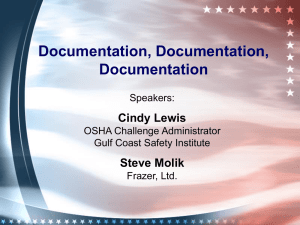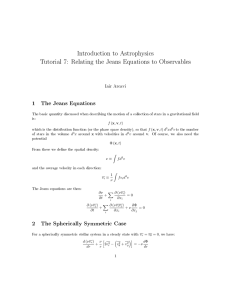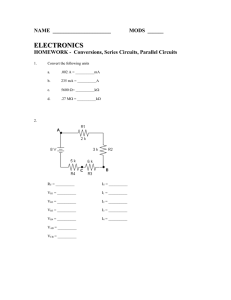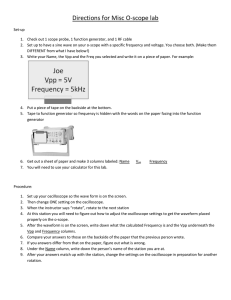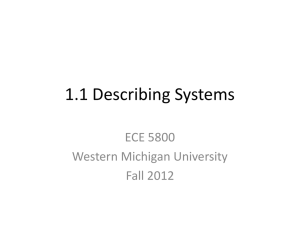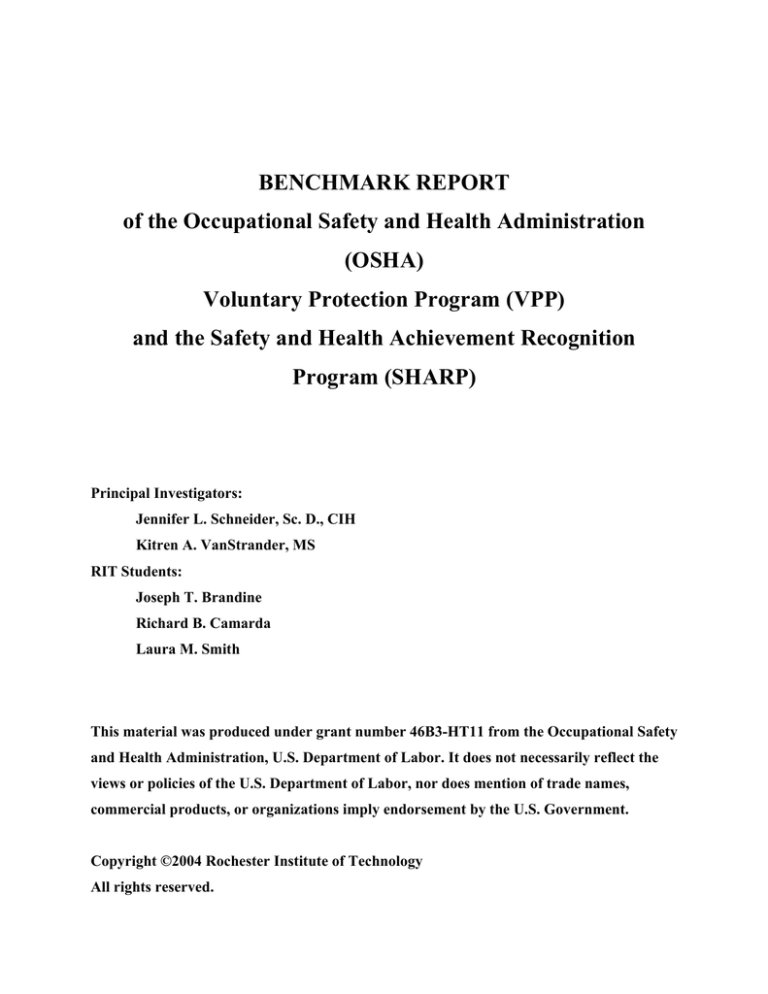
BENCHMARK REPORT
of the Occupational Safety and Health Administration
(OSHA)
Voluntary Protection Program (VPP)
and the Safety and Health Achievement Recognition
Program (SHARP)
Principal Investigators:
Jennifer L. Schneider, Sc. D., CIH
Kitren A. VanStrander, MS
RIT Students:
Joseph T. Brandine
Richard B. Camarda
Laura M. Smith
This material was produced under grant number 46B3-HT11 from the Occupational Safety
and Health Administration, U.S. Department of Labor. It does not necessarily reflect the
views or policies of the U.S. Department of Labor, nor does mention of trade names,
commercial products, or organizations imply endorsement by the U.S. Government.
Copyright ©2004 Rochester Institute of Technology
All rights reserved.
Table of Contents
Executive Summary………………………………………..Page 3
Introduction………………………………………………...Page 4
Background…………………………………………………Page 5
Method………………………………………………………Page 7
Results……………………………………………………….Page 8
Conclusions/Recommendations……………………………Page 19
Copyright ©2004 Rochester Institute of Technology
2
Executive Summary
Small businesses are faced with barriers when it comes to safety and health management. Unlike
larger companies, they may not have the expertise or resources necessary to build effective
programs. The goal of this study is to gather information about what motivates small businesses
to implement safety & health management systems and identify any issues/barriers that are
unique to small-sized companies. Members of the Voluntary Protection Program Participants
Association (VPPPA) and the Safety and Health Achievement Recognition Program (SHARP)
were selected for the survey because they have already been through the process of
implementing safety & health management systems and possess a wealth of information on what
it takes to build and run a successful safety & health management system in a small business.
Unfortunately, there were problems getting access to accurate and up–to-date contact
information for VPP and SHARP members. However, those companies who did participate
provided similar responses to the research questions. Their main motivators in pursuing VPP or
SHARP were to reduce injuries and lower worker’s compensation rates. Emphasizing the return
on investment in safety and health is an effective driver for small businesses. The primary
concern with implementation was the amount of time and paperwork. Also, with fewer
employees, it can be difficult to meet the employee participation requirements for VPP because
there is no safety expert; safety is delegated to those who have job duties in addition to safety
and health. Compliance, the foundation of a good safety and health management system, is a
large hurdle in itself for small business.
Copyright ©2004 Rochester Institute of Technology
3
A successful safety and health program is a living process built upon good documentation, but
documentation should not be a hurdle to entry into VPP or SHARP. Especially for small
business, time and effort should be used where they are most effective.
Introduction
Small businesses are faced with barriers when it comes to safety and health management. First,
they may not have the knowledge or expertise necessary to build a management system. Many
smaller firms may not even be aware of the requirements for compliance under OSHA. Another
hurdle is the lack of time and financial resources needed to train employees and managers,
control hazards, and maintain safety programs. These barriers and hurdles make it difficult for
small businesses to view safety and health management as a priority for their resources.
The true challenge is convincing small businesses that they should invest in safety and health
management to improve their business. An effective safety and health management system can
help prevent injuries, illnesses, hazards, and compliance violations. But, when it comes to
making decisions about where to spend limited resources, safety programs may not be a priority.
So, what makes some small businesses invest in safety initiatives while others do not? What
drives certain companies to go beyond compliance and strive for excellence in safety and health?
The goal of this study is to gather information about what motivates small businesses to
implement safety & health management systems and identify any issues/barriers that are unique
to small-sized companies. This information will then be used to create training materials
targeted toward small business.
Copyright ©2004 Rochester Institute of Technology
4
Background
A benchmark survey of small businesses that are members of the Voluntary Protection Program
Participants Association (VPPPA) and the Safety and Health Achievement Recognition Program
(SHARP) was conducted. VPPPA and SHARP members were selected for the survey because
they have already been through the process of implementing safety & health management
systems and possess a wealth of information on what it takes to build and run a successful safety
& health management system in a small business.
The Voluntary Protection Program (VPP) was created by OSHA to recognize worksites that
have voluntarily implemented safety and health programs which go beyond basic regulatory
compliance. To qualify for VPP, a site must have an effective safety and health management
system, employee participation, and below average injury rates. VPP is open to any type of
industry and any size business can qualify. In applying for VPP status, OSHA must evaluate
applications to see that the management system meets performance-based criteria for:
management leadership, employee involvement, worksite analysis, hazard prevention and
control, and safety and health training. If the necessary programs are in place, OSHA
representatives conduct an onsite review of the facility. Once accepted into the VPP, a worksite
is removed from OSHA’s programmed inspection list. The idea is that if a site can show their
commitment and cooperation with OSHA by allowing an onsite evaluation of their programs,
then they will build a partnership with the agency allowing them to be exempt from scheduled
inspections.
Copyright ©2004 Rochester Institute of Technology
5
The Safety and Health Achievement Recognition Program (SHARP) is similar to the Voluntary
Protection Program, but it is only available to small businesses. SHARP, like the VPP, is a
strategic partnership with OSHA designed to recognize employers with exemplary safety and
health management systems. SHARP is different from VPP in that it is only open to employers
with less than 250 employees at any one site; less than 500 company wide. Evaluations and
assistance through SHARP comes from the State Consultation Project Manager, instead of
OSHA directly. The goal is to provide free consultation services for small businesses, thereby
encouraging them to establish good management systems.
To be considered for SHARP, a site must agree to a consultation visit including: a complete
hazard identification, involving employees in the process, correcting any hazards identified,
having a safety and health management system that meets OSHA’s guidelines, and an injury rate
below the national average. When an employer receives SHARP certification, they are
exempted from programmed inspections during the period for which SHARP certification is
valid. Requirements vary from state to state. SHARP is a good program for small companies
that have high-quality safety and health management systems, but may not be able to meet all of
the requirements for VPP certification. Also, SHARP provides free compliance inspections,
while VPP requires sites to do their own audits. SHARP companies are viewed as industry
leaders in safety and health; they set examples for other small businesses to follow in making
safety a top priority.
Copyright ©2004 Rochester Institute of Technology
6
The goal of this benchmark study is to gain insight from small companies that have gone through
the initial implementation phase and now maintain an effective safety and health management
system. VPP and SHARP companies have been through this experience. We wish to uncover
the reasons why these sites chose to pursue safety and health initiatives. What pushes them to
invest in safety and health? What problems did they run into? With a better understanding of
what motivates a small business to invest in and pursue safety and health excellence, we can
train and motivate other small businesses to follow suit.
Method
Benchmark companies were selected from the Voluntary Protection Program Participants
Association (VPPPA) and the Safety and Health Achievement Recognition Program (SHARP).
Only small businesses with less than 500 total employees were contacted. Surveys were
primarily conducted over the phone; some responses were received via e-mail.
Safety
representatives (or other upper level managers with safety responsibilities) from VPP and
SHARP companies were contacted and asked the following seven questions about their safety
and health management systems:
1. What was your company’s main motivation for pursuing VPP/SHARP status?
2. Which areas required the most work to meet VPP/SHARP requirements?
3. Did you run into any problems with implementing your safety & health program? Do
you continue to have any problems managing your S&H program?
4. Who performs safety & health requirements in your company? How many people?
Copyright ©2004 Rochester Institute of Technology
7
5. Do you have an estimate of the level of effort needed to implement and run an effective
safety & health program in a small business (i.e., man-hours, number of people, hours per
week spent on safety-related tasks)?
6. Did you see an improvement after entering VPP/SHARP? What areas improved the most?
7. How do you measure safety & health performance?
These questions were designed to facilitate discussion. Those contacted were encouraged to
elaborate on their experiences and provide some examples that might help other small businesses
facing similar issues. More detailed questions were asked on specific areas that pertain to
individual companies. In this way, we hoped to gain ideas on how each business managed to get
employees to accept and become involved in company safety initiatives. Once the surveys were
completed, responses were reviewed and compared to assess any similarities or trends among
different business sectors. For example, did health care facilities produce similar responses and
how did they compare to, say, manufacturing plants. Did the respondents have similar
experiences? Were there any notable trends in the responses based upon size or hazard class?
Results
A problem encountered while conducting the benchmarking study was inavailability of contact
information. The main problem was that the study needed small businesses with less than 500
employees company wide. OSHA has a database of VPP members sorted by number of
employees; however, VPP certifies a site not a whole company. At first glance it appears as if
there are many small businesses that have achieved VPP status, but in reality there are very few.
RIT researchers attempted to contact as many sites as possible, unfortunately initial contact
Copyright ©2004 Rochester Institute of Technology
8
information was incorrect or outdated in many cases. There was difficulty contacting businesses
for the study since the necessary information did not exist. In addition, even though participation
in these programs is recognition for excellence, many were reticent to share their experience.
We are grateful to the sites that did respond and participate in the research.
A total of 15 small businesses, from a variety of industries, participated in the survey. Three
were construction companies, three were health care facilities, and the rest were general industry
or manufacturing. Ten of the sites surveyed were VPP companies; five were SHARP sites.
Following is a summary of their responses; conclusions/recommendations appear in the final
section of the report.
Motivation:
1.) What was your company’s main motivation for pursuing VPP/SHARP status?
Motivators
9
No. of Responses
8
7
Construction (3)
6
Health Care (3)
5
Manufacturing (9)
4
3
2
1
0
Reduce
Injuries
Employee
Safety
Money
Competitve
Advantage
Moral
Obligation
Response
Copyright ©2004 Rochester Institute of Technology
9
The companies’ main motivation for pursuing VPP/SHARP status was to reduce the number of
injuries and decrease worker’s compensation costs. This seems like a logical response since the
goal of any safety program should be to prevent injuries or illness. Three sites said that a
consultant recommended the VPP or SHARP program to them, and two people replied that they
entered VPP/SHARP because it provided them with a “peace of mind” knowing they were doing
their best to ensure worker safety. Other motivators were to improve the site’s safety record,
reduce insurance costs, prevent OSHA fines by ensuring compliance, to increase employee
involvement with management, and to ensure staff safety.
Others said they felt a moral
obligation to go above and beyond just complying with regulations. The SHARP companies said
they were first interested in the free annual inspections available through the program, not the
recognition, and one said they became interested in SHARP for the free consultation services
provided as part of the program. The advice and mentoring available from other VPP companies
is what interested one company to apply for VPP status. All three construction companies said
that VPP status gave them a competitive advantage and that they wanted to “set a standard for
others in the industry” of what safety should be. They weren’t seeing any improvement under
their current safety programs, so they wanted to try something new, and decided to go for VPP.
Two construction companies said they wanted to show that safety is a value of the company, and
VPP was a way of getting recognized and proving their commitment.
Copyright ©2004 Rochester Institute of Technology
10
Implementation:
2.) Which areas required the most work to meet requirements? AND
3.) Did you run into any problems implementing your S&H program?
Issues with Implementation
Construction (3)
Health Care (3)
H
ou
se
ke
ep
in
g
ua
rd
in
g
G
A
JH
se
U
E
PP
Tr
ai
ni
ng
Ti
m
Em
pl
oy
ee
at
io
oc
um
en
t
D
e
Pa
rti
ci
pa
tio
n
Manufacturing (9)
n
No. of Responses
9
8
7
6
5
4
3
2
1
0
Response
The area that needed the most work to meet VPP requirements was documentation. This was the
first thing most companies answered when asked where their gaps were. Eight people answered
that paperwork took the most effort. Programs and procedures needed to be written, manuals
needed updating, policies had to be documented, etc. Initially, one company had no formal
written safety policy. VPP requires a great deal of documentation to prove the necessary
programs are in place. Several managers said that they were already performing the necessary
procedures, but it wasn’t in writing. Three companies said training was what they were lacking
the most. Employees had to be trained on proper handling of chemicals, lockout tagout, and fork
trucks, for example. For the construction companies, an area that needed work was convincing
Copyright ©2004 Rochester Institute of Technology
11
employees that OSHA was there to help. They had to change the negative view many workers
had of OSHA in order to get them involved in safety initiatives.
None of the respondents said they had any serious problems implementing or running their safety
and health programs. However, five people said that time was somewhat of an issue. The
amount of paperwork involved in the application process took several years for some sites.
Getting everything documented in the beginning was time consuming; after that it was much less
of an issue. Holding safety meetings and training sessions requires time each month for both
management and employees. Another challenge was the employee participation requirement for
auditing, hazard prevention, and attendance at meetings. Maintaining enthusiasm among
employees after the initial implementation of new programs is an ongoing issue. A number
admitted having difficulty maintaining employee involvement and excitement regarding safety.
One manager said that “keeping a high level of employee involvement as well as a high quality
of auditing and hazard prevention is a continual challenge for the site safety manager.” Some
suggestions offered were rewarding employees with a day off if they participated on safety
committees, safety meetings with free donuts, and employee picnics. Employees need constant
reminders to keep them in the habit of using safe work practices, or else they resort back to old
ways.
Two health care businesses said they had a hard time getting employees to attend safety meetings
because they run a 24-hour facility and many work long shifts. They had difficulty getting
employees to stay longer to attend meetings or take time away during their shifts. This was also
difficult for the construction companies because their workforce is spread out at various job sites
Copyright ©2004 Rochester Institute of Technology
12
and it’s hard to get everyone together for the required meetings. Three manufacturing sites
replied that their biggest problem was employees who were reluctant to change old habits. They
didn’t want to wear the required personal protective equipment (PPE) or adopt new procedures.
The challenge was getting “old-timers” to buy into this idea of safety and change their old ways
of thinking. It required constant reminders and strict enforcement by management to make the
change. A problem for construction companies was how to keep track of numerous subcontractors at up to as many as 50 different sites. In their line of work, job duties are constantly
changing for each new project. It’s more difficult to work out the logistics of a mobile
workforce than it is for a manufacturing plant.
Ongoing Effort:
4.) Who performs safety & health requirements in your company? AND
5.) Do you have an estimate of the level of effort needed to implement and run an effective S&H
management system in a small business?
Each company representative was asked to share how they assign health and safety
responsibilities within the company and how many people perform those duties. The goal here
was to get an idea of how small businesses handle safety and health tasks because many of them
do not have full-time safety personnel. Most of the responses indicated that those in charge of
safety requirements did so in addition to other job responsibilities. Some of their job titles were:
sales manager/safety director; plant manager; site safety coordinator; safety manager/production
supervisor; director of safety, quality, and training; and foreman. In the construction industry,
project managers were often assigned a safety role since they are on-site and working directly
with employees. One construction company with 105 employees had two field safety
Copyright ©2004 Rochester Institute of Technology
13
technicians responsible for compliance on-site. In health care facilities, administration
employees were often in charge of safety. Usually, between one and three supervisors or
managers are assigned safety roles in addition to other job tasks. The larger the company, the
more likely they were to have someone designated as a safety manager. In very small companies
(less than 50 employees) the plant manager often headed safety programs. Three manufacturing
firms said they combined safety requirements with quality programs, like ISO 9001, to be more
efficient. In the manufacturing setting, three businesses replied that safety was the responsibility
of all employees. Tasks were completed by safety teams or line staff, avoiding the need for a
safety department, because it became a part of employee’s daily routine. Sharing safety
responsibilities works well for the company because employees don’t even realize they are doing
safety. It becomes an integrated part of everyone’s job functions, so safety programs don’t take
up much time. Also, everyone feels like they contribute to a safer work environment by taking it
upon themselves to notice and correct hazards. If workers are given safety and health
responsibilities, they’ll have more of an interest in the outcome than if management took
responsibility for the whole program.
This was a rather subjective question because it clearly depends on the individual site and how
much work needed to be done to meet VPP/SHARP requirements. When asked to estimate the
level of effort needed to implement and run an effective safety & health management system in a
small business, everyone surveyed said it initially took quite a bit; then once the programs were
put together and in place, it took much less time to maintain. The number of hours spent on
safety related tasks depends on employee cooperation and involvement with management. In the
health care sector, respondents said they currently spend about three hours per month conducting
Copyright ©2004 Rochester Institute of Technology
14
safety meetings and inspections. Initially, more time was put in to write programs, train
employees, etc. One facility estimated about four to six hours per week and another said two to
three hours per week in the beginning. Manufacturing plants surveyed spent more time on
safety-related tasks. One company estimated eight hours per week plus two to three hours per
week from each department manager. Another said they spend around six hours per week
managing their S&H system. A SHARP site replied that they spent over a month rewriting
programs, establishing procedures, and conducting inspections to implement their new
management system. After that, time is spent on training each year, but it doesn’t take as much
work once all the programs are up and running. VPP requirements are more rigorous than
SHARP requirements, so the application phase for VPP could be quite long. A construction
company said it took them two years to get ready for VPP. It took four months to complete the
VPP application, with someone working full-time for two weeks straight at the end, for one
manufacturing plant to get their programs in place.
Copyright ©2004 Rochester Institute of Technology
15
Improvements:
6.) What areas improved the most after entering VPP/SHARP?
Im provem ents
No. of Responses
7
6
Construction (3)
5
Health Care (3)
4
Manufacturing (9)
3
2
1
Client
Recognition/project
capture
Lower Insurance
Cost
Less Injuries
Other
Employee
Participation
Employee
knowledge/hazard
awareness
Communication
Improved Morale
0
Response
All companies surveyed said they saw improvements after entering VPP or SHARP. The biggest
change, reported by seven companies, was an improvement in employee pride and morale.
Employees feel safer at work and know that management cares about their welfare in addition to
the goods or services produced. Safety representatives expressed a noticeable change in attitude
and involvement from their workforce. Employees were more cooperative and engaged with
management in making decisions and being a part of safety teams. Two sites reported they felt
the VPP experience has made the company closer and improved communication, both upwards
and down the chain. Other improvements listed were: increased employee knowledge and
awareness of hazards, better programs and training, decreased accident rate, increased employee
participation, more proactive in addressing safety concerns, and a decrease in worker’s
Copyright ©2004 Rochester Institute of Technology
16
compensation costs. Three people said they noticed better reporting of safety issues and
accidents, including near misses, by employees. This goes along with the increase in hazard
awareness by employees. As the workforce becomes more aware of potential hazards, there will
likely be more reports of safety issues. Not that there are more hazards or injuries occurring, it is
just that now they are more likely to be noted and addressed. Several companies also said they
started recording and tracking first aids and/or near miss incidents. Previously, these types of
minor injuries were not written down or not reported to management.
The construction companies surveyed said they saw an increase in new projects and client
recognition after gaining VPP status. They use it as a marketing tool to advertise their
commitment to safety on the job. Construction workers also saw a change in their employees’
attitude toward OSHA. Working along with agency representatives as part of VPP initiation,
they learned to view OSHA as less of a ‘bad guy’ and more of a partner. This also helped with
employee acceptance of new safety programs. Another improvement not to be understated is a
decrease in worker’s compensation and liability insurance costs, especially in the construction
industry. All three firms reported a decrease in insurance costs after entering into VPP. One
firm admitted to a savings of $250,000 within six years after gaining VPP status. Estimates on
liability insurance also decreased. And not just for the construction field- a manufacturing site
in SHARP reported their worker’s compensation rating dropped from 1.08 to 0.72; a savings of
over $10,000 per year!
Copyright ©2004 Rochester Institute of Technology
17
Measurement:
7.) How do you measure S&H performance?
Metrics Used
No. of Responses
7
6
Construction (3)
5
Health Care (3)
4
Manufacturing (9)
3
2
1
Employee
Safety
Concerns
Audit
Findings
Employee
Involvement
Insurance
Cost
# of Injuries
Accident
Rates
0
Response
Each facility is required by regulation to keep an OSHA log of all recordable injuries and
illnesses, but there are many other ways to measure safety and health performance and track
changes. Six companies said their primary indicator of performance is the number of injuries or
illnesses each year. Accident rates like lost time accidents (LTA) and total lost workdays are
used by more than a third of the companies to track performance. They also look for a year-toyear flux in those figures to monitor changes that result from new programs or incentives. A few
of the people surveyed said they look at near misses and first aids reported in addition to
recordables. Four companies measure how well they’re doing through yearly estimates by
insurance companies. The better their safety and health programs, the lower their liability and
worker’s compensation rating. Three sites say they choose not to use accident rates to measure
success because they’re not an accurate reflection of the management system. Instead, they base
Copyright ©2004 Rochester Institute of Technology
18
how well the safety and health programs are working on employee involvement and knowledge
(these were sites with very minimal accidents to begin with). One health care site tracks their
record of safety concerns from employees to judge how well they’re doing. This tells them
several things: how effective employee awareness of hazards is, how open the lines of
communication are, and how quickly management addresses those concerns. Another business
said they conduct employee interviews and use those responses to gauge how effective their
system is at creating a safe work environment. Construction companies are a little different with
their measurements. They tended to use annual audit findings from OSHA and their insurance
carriers to track safety progress.
Conclusions/Recommendations
Going back to our original question, “What does motivate small businesses to pursue safety and
health management and what barriers do they face along the way?” - the results of surveys from
small business members of VPP and SHARP help point to some answers.
Small businesses, unlike large corporations, do not seem to use safety as a marketing/public
relations tool. The exception to this would be in the construction industry where firms directly
compete with each other for project capture. The construction sector has many issues that are
different from other industry groups. For example: a mobile workforce, changing job sites, and
the regular use of sub-contractors. In looking for ways to encourage business to apply for
programs like VPP, construction sites need a slightly different approach. Also, it may not be
feasible to meet all of the requirements for VPP due to the mobility of their workers. It seems
Copyright ©2004 Rochester Institute of Technology
19
that having a separate section of VPP expressly for construction may address those needs. Using
VPP as a marketing tool for client recognition seems to be a good way to push the benefits of
VPP to contractors. Of course, money is always an issue when looking to invest in new
programs, so emphasizing the likelihood of lower insurance rates would probably work well, too.
First and foremost, a reduction in injury and illness rates is what many small businesses seek to
gain from implementing a safety and health management system. A reduction would help to
improve their worker’s compensation rating and thus save money on annual insurance costs.
Smaller companies are usually much more concerned with production and sales than safety.
Since they don’t have the capital that the larger firms have, investing significant amounts of
money in safety and health may not be a top priority. Insurance cost savings shows a direct
return on investment that can be very helpful for encouraging smaller firms to invest in safety.
While the concrete benefit of cost savings from a reduction in injury rates was the main reason
stated for initially pursuing safety and health, the resulting improvements were mostly improved
morale, employee participation, and better communication with management - which are harder
to measure, but very important to business success. Most companies surveyed do not measure
these indirect benefits to assess their safety and health performance. Generally, businesses use
accident rates and number of injuries to gauge performance. While those statistics are important,
other metrics should not be overlooked. Using employee participation, hazard reporting, and
employee surveys can also be useful indicators of how well a safety program is working for
employees and also as a justification for safety and health funding.
Copyright ©2004 Rochester Institute of Technology
20
Small businesses often lack the expertise on safety and health that larger companies have. In
discussions with these small business representatives, it seems that for the most part,
management has a genuine concern for the safety and well-being of their employees. This may
result from the fact that many times the owner of the company is also the plant manager, and has
a strong interest in the output of his employees. Or it may be because in a smaller facility the
people are closer and have the opportunity to interact more with management. Either way, the
general feeling was that small business owners wanted to make sure they were doing what they
should be doing to provide a safe workplace, but often are not aware of what those requirements
are. This is why many small businesses turn to SHARP for help. One manufacturing firm told
of how they first became involved in the program. The owner of the company (fifty employees)
read an MSDS listing exposure limits for a certain chemical. He wanted to make sure he wasn’t
exposing his employees to toxic levels, but didn’t know how or where to get occupational
exposure testing done. Hiring an independent consultant to do testing and analysis can be
expensive. Most employers seemed willing to pay for some degree of testing, but the real
problem they had was not knowing who to trust. Often, chemical sales representatives will offer
to do industrial hygiene testing, but they have ulterior motives - they want to sell their product
versus the current product being used. A lack of knowledge about industrial hygiene worries
some owners that consultants will recommend more testing than necessary just to get business.
How are they supposed to know what really needs to be tested and what does not? In situations
like this, the SHARP program is ideal because it offers free compliance inspections by an
independent auditor. Findings do not get sent to OSHA and the inspectors have no business
interest to gain.
Copyright ©2004 Rochester Institute of Technology
21
For small businesses, it may be easiest to pursue SHARP before going for VPP status. The
amount of paperwork and rigorous application process can be overwhelming for many
companies. Resources available through the state as part of SHARP can help a company
establish a good safety and health management system. If they wish to gain more contacts and
resources, the business could then apply to VPP. This is precisely what one company in New
York State did. They had been involved with SHARP for several years and wanted to take the
next step by gaining VPP recognition. VPP was a larger, national program that offered more
business contacts and opportunities than the state run SHARP. The downside is that they no
longer receive the free annual compliance inspection from the state as part of SHARP.
A number of companies said that the VPP or SHARP was recommended to them by a private
consultant or their insurance company. This is an excellent way to promote VPP because the
motivation is to decrease liability costs, which many firms reported as an improvement after
entering VPP, and the recommendation comes from a source other than OSHA itself. If a
business can realize that “safety pays” then they are more likely to pursue it. The indirect
benefits of employee participation, improved morale, and better knowledge and communication
reported by the majority of companies isn’t realized until later, after an effective system has been
in place for awhile. Of all the companies surveyed, the one thing that was immediately
noticeable was the support of upper management for the safety program. If management doesn’t
buy into the idea and support it, then it will not be effective. To a certain extent, this depends on
the leadership style of the company. Some owners choose to go beyond compliance because
they feel a moral obligation; others do not place as much value on safety. To the latter, it is
recommended that the financial benefit be emphasized.
Copyright ©2004 Rochester Institute of Technology
22
SHARP companies seemed like a better source of information for this study because they are all
small businesses. We were unable to get a full listing of companies because it’s confidential
information protected by the state. The contacts received were from a private source, not the
agency. It seems strange that a list of SHARP companies is not made public because it is a
recognition program and one would think that those companies would want to receive some
benefit from being recognized for their excellent safety initiatives, similar to VPP companies. A
wider variety of small business contacts are associated with SHARP than VPP because the
requirements are not as demanding and free consultation is available. It would be a good
resource for small businesses to be able to network with each other on how to address similar
safety issues. As stated earlier, the VPPPA contact list is also difficult to keep updated with
current contact information.
Although we had some difficultly contacting enough small businesses, those that were surveyed
represented a variety of industries with different processes and issues. There were three
construction and three health care facilities out of fifteen total companies. Those six were all in
VPP, which leads one to believe that OSHA may have targeted those two sectors to encourage
safety and health management. If the goal is to get more small businesses into the VPP, then it is
recommended to target specific business sectors, and inform them of what VPP is and how it
would benefit their business. For small business, it is recommended to promote the possibility of
insurance savings on worker’s compensation and liability. Also show that OSHA should not be
looked upon as the enemy; they are there to help and emphasize the benefits of having an on-site
inspection to help point out compliance issues management may not be aware of. Offer some
Copyright ©2004 Rochester Institute of Technology
23
suggestions on how to change employee behavior and unsafe habits on the job. Several
companies said this was the only on-going struggle with safety and health management.
Small businesses can be hard to regulate because there are so many, and they can often slip under
the radar. A lack of specialized knowledge in safety and health along with some unique
processes and equipment found at smaller sites presents barriers to compliance that larger firms
can overcome. Many small businesses have old, unguarded equipment and unusual processes
that require special engineering or modification. Compliance inspections through SHARP are
excellent ways to get professional, unbiased recommendations on how to comply with OSHA
standards.
Training geared toward small businesses needs to address the areas where many small businesses
are lacking. According to this study, the deficiencies are mostly in documentation of policies
and procedures, enforcement of PPE, employee involvement, guarding, and job hazard analyses.
The time necessary to create written programs and policies can be too much for the average
small business manager who has many other job responsibilities. They may fail to see the
benefit in documenting something they’re already doing and have been doing for years. In this
case, VPP can seem more like needless paperwork than a benefit to the company. Training
materials should provide examples and templates for the small business to use in creating their
own documents. That said, it is important to create a specific plan that works for each individual
company. Start with generic programs, but customize and integrate them into the business
routine. A good safety program should be easy for employees to follow; if it makes their job
harder or presents a nuisance, they won’t follow it. Effective training should provide managers
Copyright ©2004 Rochester Institute of Technology
24
with examples of how to adapt materials to their own facility so that it becomes a useful tool, not
just something that sits on a shelf and collects dust. A successful safety and health program is a
living process built upon good documentation, but documentation should not be a hurdle to entry
into VPP or SHARP. Especially for small business, time and effort should be used where they
are most effective.
Copyright ©2004 Rochester Institute of Technology
25


